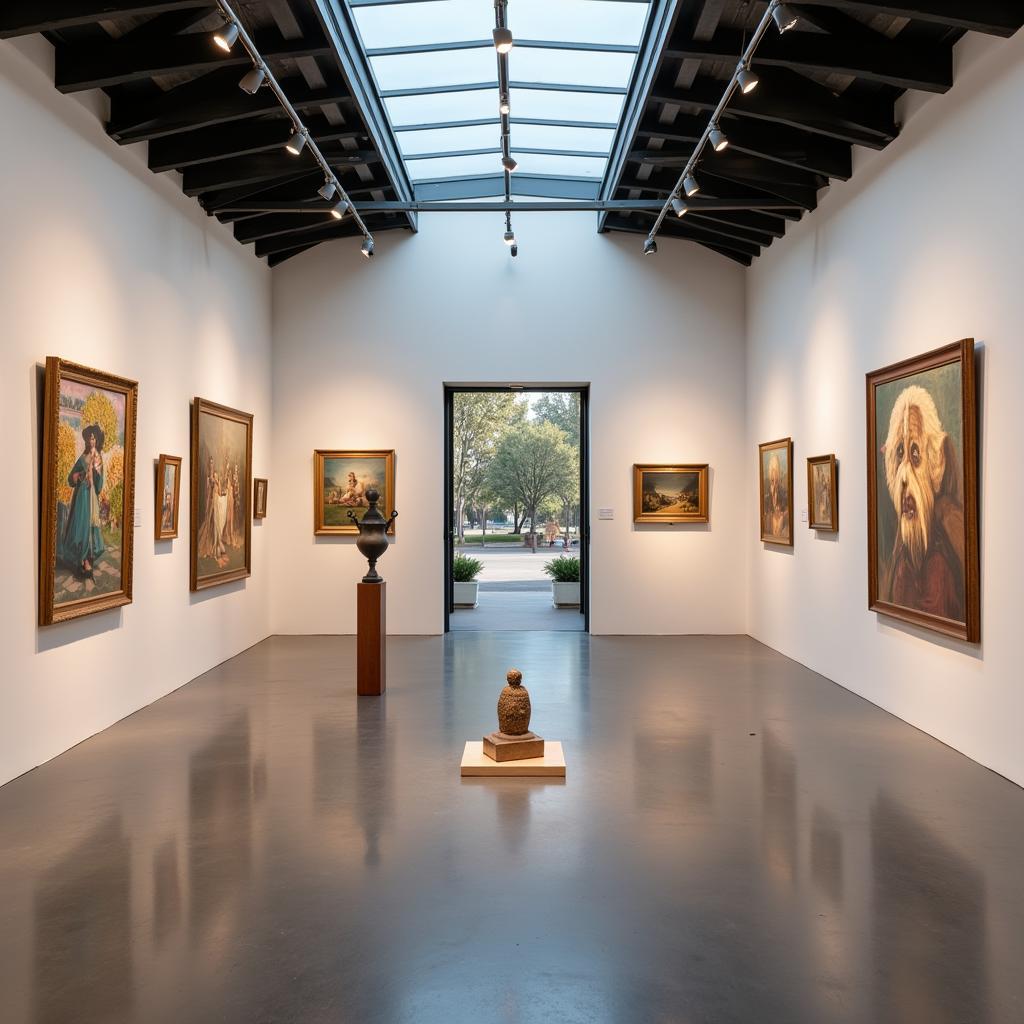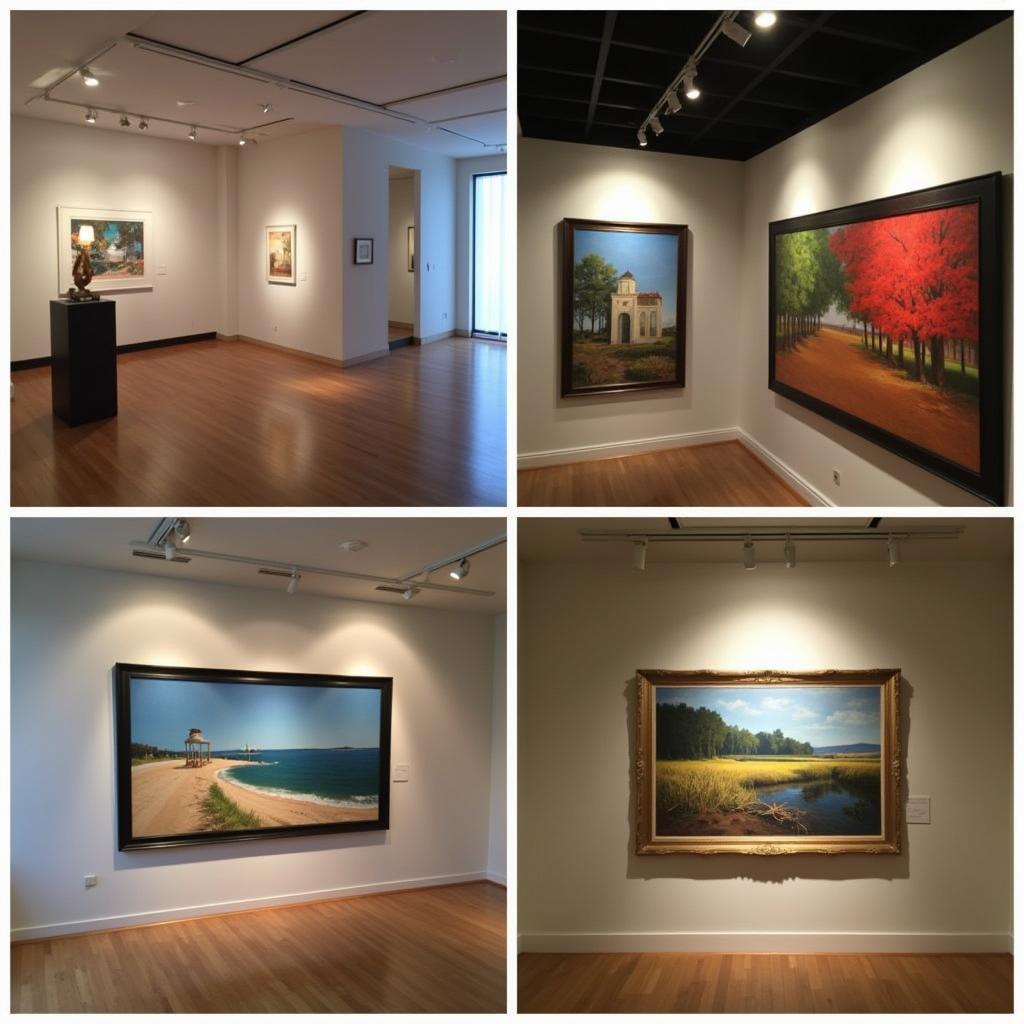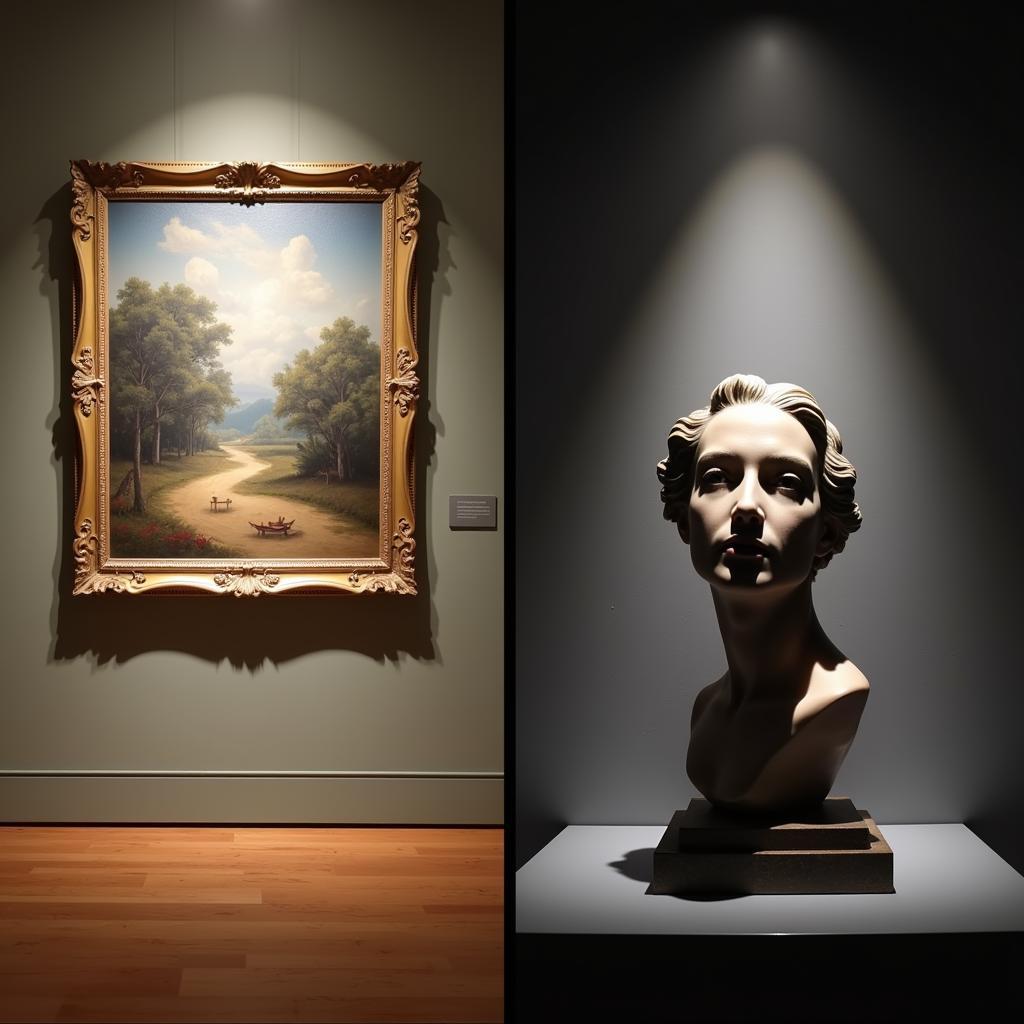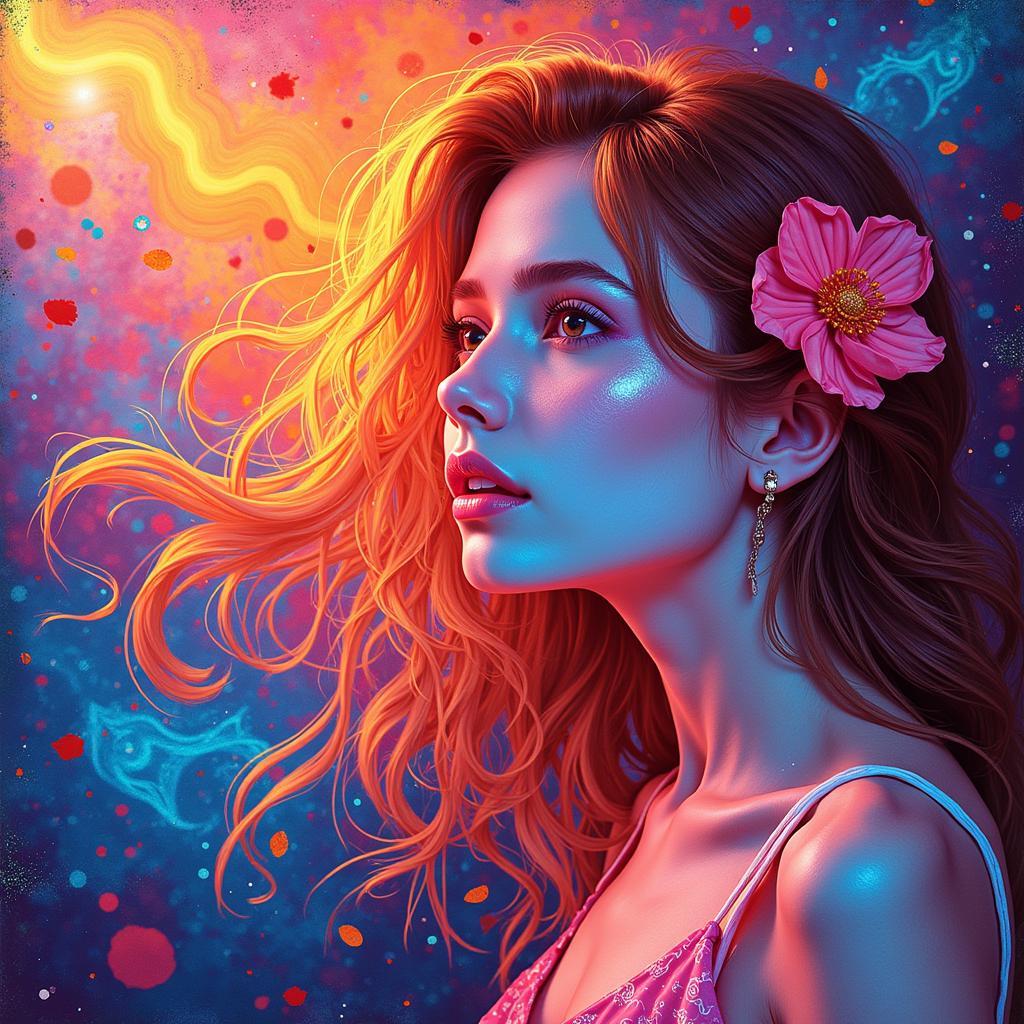The Art of Illumination: Mastering Art Gallery Light
The strategic use of Art Gallery Light is crucial in showcasing artwork to its full potential. More than just illuminating the space, the right lighting design can highlight textures, accentuate colors, and evoke emotions, transforming the viewer’s experience.
The Power of Light in Art Galleries
Imagine walking into an art gallery where the paintings seem to glow from within, their details sharpened and their colors vibrant. This transformative effect is the magic of proper art gallery lighting.
 Art Gallery Lighting Techniques
Art Gallery Lighting Techniques
Light, in its various forms and applications, can dramatically influence how we perceive and interact with art. It has the power to:
- Draw attention to focal points: By adjusting the brightness and direction of light, you can guide the viewer’s eye to specific areas of interest within a piece or the gallery as a whole.
- Enhance dimensionality: Carefully placed shadows can create depth and texture, making two-dimensional artworks appear more dynamic and three-dimensional art even more striking.
- Influence emotional response: Warm, cool, bright, or dim lighting can dramatically alter the mood and atmosphere of a gallery space, influencing how viewers connect with the displayed art.
Choosing the Right Art Gallery Lights
Selecting the right types of art gallery light is crucial. Each light source possesses unique characteristics that affect the artwork and the overall ambiance.
1. Track Lighting: This versatile system is a staple in many galleries. Track lights offer flexibility, allowing you to adjust the direction and intensity of light as needed. They are particularly effective for highlighting large artworks or for galleries with rotating exhibitions.
2. Recessed Lighting: Ideal for creating a clean and minimalist look, recessed lighting fixtures are installed directly into the ceiling. They provide general illumination and can be used in conjunction with accent lights to highlight specific artworks.
3. Picture Lights: Specifically designed to illuminate artwork, picture lights are typically mounted above or below a frame. They provide focused illumination that enhances details and minimizes glare.
4. Natural Light: While challenging to control, natural light can add a unique dimension to an art gallery. When used strategically, it can create a welcoming and inviting atmosphere. However, it’s crucial to manage natural light carefully to avoid damaging sensitive artwork.
 Different Types of Art Gallery Lights
Different Types of Art Gallery Lights
Factors to Consider for Optimal Illumination
Effective art gallery lighting is a careful balance of art and science. Here are key factors to consider:
- Type of Artwork: The lighting needs for a delicate watercolor painting differ significantly from those of a large-scale sculpture. Consider the medium, size, and fragility of the artwork when selecting lighting solutions.
- Gallery Size and Layout: The dimensions and layout of the gallery will dictate the type and placement of lighting fixtures. High ceilings may require more powerful lights, while smaller spaces benefit from a more focused approach.
- Desired Atmosphere: Do you want to create a bright and airy space or a more intimate and dramatic setting? The color temperature and intensity of your lighting can significantly impact the overall atmosphere.
- Conservation Efforts: UV rays from both natural and artificial light can damage artwork over time. Employ UV-filtering bulbs and window treatments to mitigate this risk.
“Lighting is an essential element in experiencing art,” says renowned gallery director, Amelia Chen. “It’s the language that speaks to the soul of the artwork, revealing its nuances and inviting the viewer to truly see.”
Common Mistakes to Avoid
Even with the best intentions, it’s easy to make mistakes that detract from the artwork and the overall gallery experience. Here are some common pitfalls to avoid:
- Overlighting: Too much light can wash out colors, create unwanted glare, and make it difficult for viewers to appreciate the artwork.
- Inconsistent Lighting: Uneven lighting can create distracting shadows and make the gallery feel disjointed. Strive for a balanced and harmonious illumination throughout the space.
- Ignoring Color Temperature: The color temperature of your lighting can significantly impact the mood and appearance of the artwork. Warm light (2700-3000K) is generally more inviting, while cool light (4000-5000K) can make colors appear more vibrant.
- Neglecting Maintenance: Regularly clean your lighting fixtures and replace bulbs as needed to ensure optimal performance and prevent dust buildup from dulling the artwork’s appearance.
 Common Art Gallery Lighting Mistakes
Common Art Gallery Lighting Mistakes
By understanding the principles of art gallery light and choosing the right lighting solutions, you can create a captivating and immersive experience that allows artwork to shine and viewers to connect with its beauty on a deeper level.
FAQs
Q: What is the best lighting for an art gallery?
A: There is no one-size-fits-all answer, as the best lighting depends on the specific artwork, gallery space, and desired atmosphere. However, track lighting, recessed lighting, and picture lights are popular choices for their versatility and ability to provide focused illumination.
Q: How can I protect my artwork from UV damage?
A: Use UV-filtering bulbs in your lighting fixtures and consider installing UV-blocking film on windows to minimize exposure to harmful rays.
Q: How often should I clean my art gallery lights?
A: It’s recommended to clean your lighting fixtures every 3-6 months to prevent dust buildup and maintain optimal performance.
Q: Can I use smart lighting in an art gallery?
A: Yes, smart lighting can provide greater control over the intensity, color temperature, and scheduling of your lighting, allowing you to create dynamic and energy-efficient solutions.
Q: Where can I find more information about trending wall art 2024?
A: For insights into the latest trends in wall art, be sure to check out our dedicated article on “Trending Wall Art 2024.”
Need assistance with illuminating your art collection? Contact us at Phone Number: 02462573573, Email: [email protected] or visit us at Savico Megamall, 7-9 Đ. Nguyễn Văn Linh, Gia Thụy, Long Biên, Hà Nội 10000, Việt Nam. Our dedicated team is available 24/7 to assist you.




